
Try meatless for one day.
What you eat makes an enormous difference in your carbon footprint! Fossil fuel is often seen as the main culprit for global warming. However, that is far from the truth. It is estimated that animal agriculture is responsible for 18% of all greenhouse gases, and most importantly, methane gas. Aside from air pollution, factory farming is guilty for freshwater depletion, deforestation, ocean dead zones, and many more environmentally damaging practices.
By cutting out animal products, you are combating climate change and saving the lives of countless animals. Take it one day at a time, or go all in as a vegan or committing to to multiple meatless days every week! Each meatless meal adds up to reduce carbon.

Buy 25% of your groceries at a farmers market instead of a retail store.
farmers markets are great for the planet in a variety of ways. They sell local food, which greatly decreases the emissions involved in transportation – many market prohibit farmers from selling food grown more than 200 miles away, and some go as low as 50 miles in their limitations. Additionally, farmers markets are known for selling organic food, thereby avoiding damage done by pesticides and accelerating the green agriculture movement.
Even without the climate benefits, farmers markets are an affordable way to buy groceries that also has the upside of meeting new people and getting more involved with your community.

Upgrade to an Energy Star laptop.
When searching for a new laptop or computer, buy one with an Energy Star label on it! This means that the computer is certified to use 25-40% less energy. Energy usage is a big cause of harmful emissions and reducing that is a great way to reduce your carbon imprint.
Remember to to recycle or donate your old laptop if you decide to upgrade!

Switch every light bulb in your home with LED lights – save energy, save money, and reduce your carbon.
Switch the light bulbs in your home to LED lights and enjoy the benefits. LED lights are more energy efficient than traditional fluorescent and incandescent lights. This reduces your electricity costs. LED lights also last much longer than traditional lights. They are also more durable and less susceptible to damage. Also, unlike traditional lights, LED lights turn on and off instantaneously and require no ‘warm-up’ period.
Finally, LED lights come in different colors, from warm to cool. You can select what color you want depending on the mood desired for that part of your house.

For today, use public transit or bike. Don’t drive.
Giving up your car for the day saves greenhouse gas emissions and eliminates toxic fumes. Taking a bike, bus, train, or subway can have a tremendous impact on your daily carbon emissions.
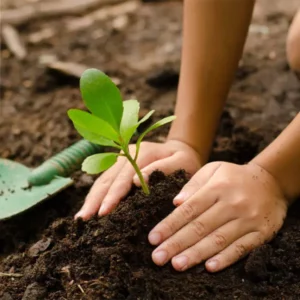
Plant a tree to reduce carbon. Plant it yourself or support a program that plants trees.
Trees take carbon out of the air. A mature tree in a tropical forest can remove 1 metric ton of carbon per year, but all trees planted add up! This action is ongoing – your tree will reduce carbon every day for the life of the tree. Trees actually take carbon out of the atmosphere for their entire life.
If you are not in a position to plant one yourself, check out the cheap, easy, and reliable ways to plant trees at the OneTreePlanted.org. They do a great job managing tree planting projects world wide.
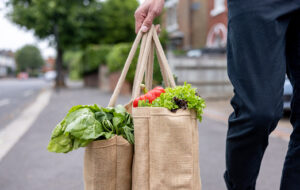
Bring a reusable shopping bag or backpack to eliminate the waste.
I’m sure we’ve all been there: you’ve just done a week’s worth of grocery shopping alone. You try to get everything into as few bags as possible so you can carry it all, and the bag breaks in the middle of the parking lot. Save yourself the trouble and bring your own bag!
Canvas bags are far more durable than paper or plastic, and they’re better for the environment as well. By bringing your own bag to the mall or grocery store, you save the environment from supporting another paper or plastic bag in a landfill, leading to less waste overall. Make the switch to a cute canvas bag today!

Set a timer and do it under 5 minutes.
You might be surprised how long you shower for, not to forget the amount of water you use during it. On average, a 10 minute shower uses around 20 to 25 gallons of water. Although water saving shower heads are an improvement, the best way to save water and energy is to take shorter showers, you could save up to 5,000 gallons.
OUR CHALLENGE: set a timer during your next shower, if you are taking more than 10 minute showers, you might want to think about how you can down size that. A couple of fun ways to time yourself: Use a cooking timer! Or, more fun, shower to your favorite song or two — when it ends, hop out!

The fashion industry is incredibly wasteful – buy gently worn to reduce your impact.
Wear gently worn (used) clothing and take action against climate change. The fast fashion industry, which makes cheap clothes that last a short time before they have to be thrown away, is a massive global contributor to CO2 emissions: in 2017, the fashion industry emitted 1.7 billion tons of carbon dioxide, and those emissions are set to increase 50% by 2030. Additionally, fast fashion contributes to landfill overflow and water shortages, as water is required in the process of growing crops for fabric and dyeing textiles.
If you need new clothes, buying used clothing is a great way to curb your environmental footprint: step out from underneath fast fashion’s thumb today.
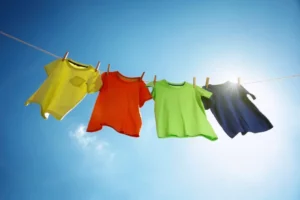
Wash in cold water, then hang dry.
You can cut your carbon footprint by doing your wash in cold water and hanging your clothes to dry. Everything will get clean, your clothes will last longer, and you are decarbonizing your life. Every notice how much lint comes from each load in the dryer? That is the wear and tear the dryer is putting on your clothes.

Make the switch to a company that generates electricity through solar or wind energies.
By powering your home with renewable energy sources such as solar or wind energy, not only do you reduce global warming by reducing the production of carbon-intensive energy, you also improve your health. Many power companies allow you to chose renewable rather than fossil energy. Air and water pollution emitted through coal and natural gas plants are linked to various diseases such as breathing problems, neurological damage, cancer and various other diseases.
By installing solar panels to your house, you can save money by not paying electricity bills. If you are living in an apartment and can’t invest in solar panels, you could buy energy efficient appliances and still contribute to the fight against climate change. By purchasing energy efficient appliances, you could earn tax credits.

Less stuff being made = lower emissions.
Got an old deck that’s still in good shape? A skate helmet that doesn’t fit anymore? Some wheels laying around that you don’t use anymore? Find a skater in need and give those away.
First, this helps out a fellow skater, but, it’s also good for the environment. Less stuff being produced in a factory means less carbon emissions. When you give someone a deck that it is still good, they don’t have to go out and buy a brand new one… it’s a win all the way around.
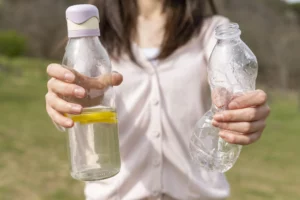
Bring your own bottle!
Skate with your own re-usable bottle. It’s better for the environment, plus, you can put stickers on it! you can also re-fill it as many times as you want. You won’t be thirsty and you’ll be doing a solid for our planet. And, if your get bored, you can do tricks over it.

Live the car, take the board.
Skateboarding to work or school helps combat climate change by reducing emissions from cars and other vehicles. When you skateboard, you are not burning fossil fuels like gasoline or diesel. This means that you you are not contributing to climate change.
Skateboarding also helps to improve aire quality. Cars and other vehicles emit harmful pollutants into the air, which can contribute to respiratory problems and other health problems. In addition to reducing emissions and improving air quality, skateboarding also helps to reduce traffic congestion. Taking more cars off the road helps to reduce traffic congestion and further reduce emissions and air pollution.
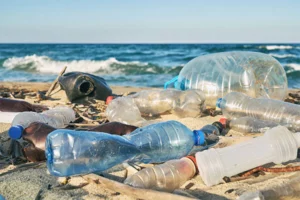
Stop using single-use plastic bottles.
Plastic is seemingly everywhere– in our bags, in the packaging of the foods we buy and the products we use, and carrying the water we drink. Plastic, however, does not decompose easily in landfills, leading to a huge waste problem on land and even in our oceans. Although it may be imposible to completely cut plastic out of our lives, there are a few simple actions we can try to reduce our use.
Simply carrying a canvas bag when shopping, buying whole rather than packaged, processed foods, using a reusable water bottle, or buying a reusable hand soap dispenser can go a long way in helping us use less plastic, and therefore keep it out of the environment.
There was a problem reporting this post.
Please confirm you want to block this member.
You will no longer be able to:
Please note: This action will also remove this member from your connections and send a report to the site admin. Please allow a few minutes for this process to complete.